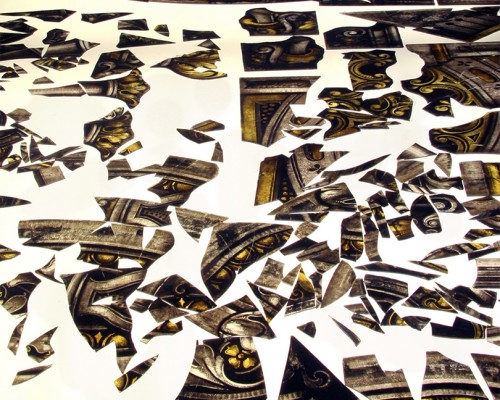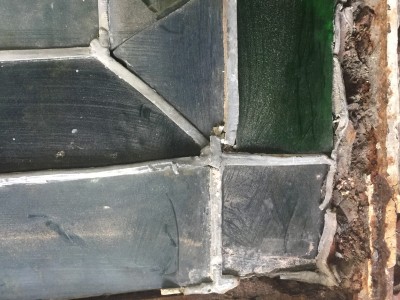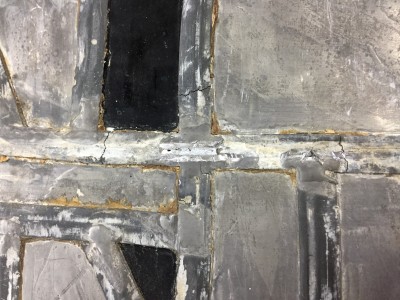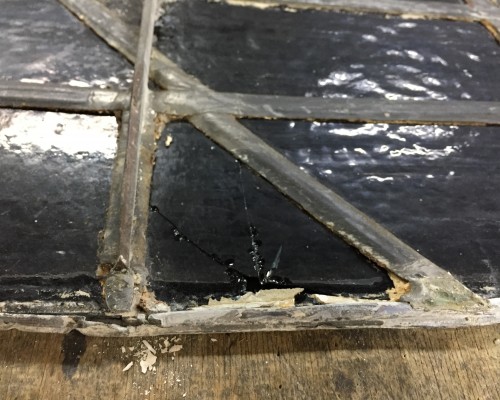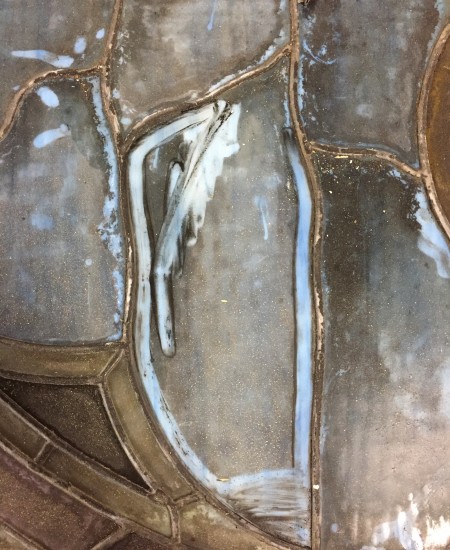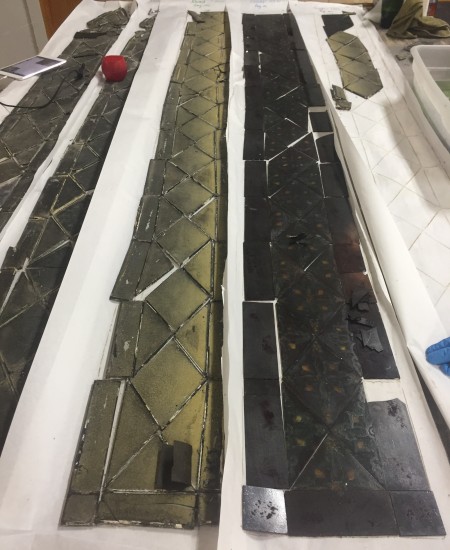Some of the most beautiful works of art are the stained glass masterpieces that are found in churches. Among these pieces, there are stained glass windows that are hundreds of years old and hold special historic, artistic, and societal significance. Because of their beauty and importance, it is imperative to the churches to keep their stained glass in pristine condition. But how can churches tell when their stained glass is in danger and in need of repair? Read on to find out!
When windows have been hanging in churches for many years, natural damage occurs from age and the elements. Here’s a list of things we check for when we survey windows for restoration:
1. Lead Fatigue:
When the lead in the windows begins to fatigue, this can cause weakness in the window and the window can begin to bow outward or inward or leak. When the lead in the window begins to weaken, more pressure is placed on the glass and could cause breaks in the glass.
Weakened or fatigued lead could crack, corrode, or grow mold or other harmful substances if left untreated.
Since the lead is the main provider of structure and stability for the window, it is of utmost importance to be sure that the lead is in good condition so that the window can remain in the church for many more years to come!

The lead in this window has corroded and the frame has been compromised due to tropical weather. The window became unsteady and glass pieces were broken. 
The lead in this image has begun to crack in some areas due to stress.
2. Breaks in the glass:
Cracks or breaks in the glass can occur for various reasons. The glass could be damaged due to vandalism, hail storms or other natural disasters, or from lead fatigue and gravity.
Depending on the severity and placement of the break, our studio would survey the best means of replacing or fixing the piece. If the piece is shattered beyond repair, our glass studio would replace the piece with an identical match. If the damaged piece is mendable, our craftsmen would use a special glass glue to mend the pieces back together.
It is imperative to fix broken glass pieces because the stability of the window would be compromised and leakage could occur and cause additional issues with the lead.

This window has been cracked due to lead fatigue. The pressure of gravity on the window caused a break. 
This window has been shattered. The pieces will be remade by our painter to be replaced in the window.
3. Water Infiltration:
If water repeatedly infiltrates through a stained glass piece, it is only a matter of time before damage will befall the window. The water damage has likely occurred either because the grout has failed, there are breaks in the glass that is allowing leakage, or the lead has fatigued to the point that the window is no longer water-tight.
Though a large quantity of churches have protective glass or storm windows to protect their stained glass windows from the elements, after many years, these can fail. Water can become trapped between the protective glass and the stained glass window itself.
Water infiltration is a big issue due to the fact that untreated it can rot the sills of the windows and cause the lead to corrode and the grout to disintegrate, compromising the stability and integrity of the window.
4. Onsite Repairs:
Onsite repairs have been made to a number of stained glass windows, but unfortunately, they were only meant as a short term fix and not a long-term solution. Back in the old days, some stained glass studios used to use silicone to repair cracks in the glass or seal in new pieces, like a bandage. However, silicone is no longer recommended for use in fixing stained glass windows due to the fact that it causes the lead to corrode, and could possibly damage painted pieces of glass.
If new glass pieces, lead, or silicone were used to repair a stained glass window, the original window is not as structurally sound as it once was. Much like a bandage, onsite repairs are only meant to be more of a temporary fix.
One of the first things that we check is to see if anyone has tampered with the original window and what changes were made.
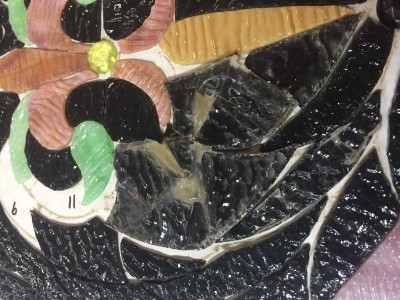
5. General Filth and Grime:
Sometimes stained glass windows are just in need of a good cleaning. Years of dirt, muck, grime, and even paint from renovations to the church can coat the windows and distort the image. This layer of film on the window could block some of the sunlight from getting through the glass and dim the radiance of the image.
Stained glass windows need light to be able to truly be seen as they were meant to, so it’s very important to have the windows removed and cleaned. Depending on environmental factors and placement of the stained glass, some windows will need cleaning and reparation much faster than others.
If possible, be sure to check the conditions of your windows and if painting or renovating the church building, cover the windows and protect them from being sprayed by paint.

The beautiful baby blue glass in this window is completely hidden by a layer of dirt! 
These windows were spray painted. The yellow layer of paint was removed to reveal the actual window, pictured on the right.
The best prevention for more damage to your windows is to be aware of their condition and know when it’s time for them to be restored. Windows that begin to fall into disrepair are susceptible to more broken glass pieces, more damaged lead, and destruction to the window as a whole.
If you would like Stanton Studios to come out and do a professional survey of the stained glass in your church, feel free to reach out to us by emailing info@stantonglass.com or call us at (800) 619-4882. We’d be happy to help you or your church keep your stained glass masterpieces in good condition.

